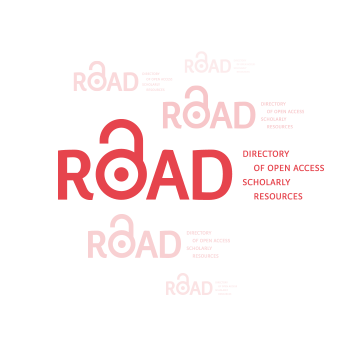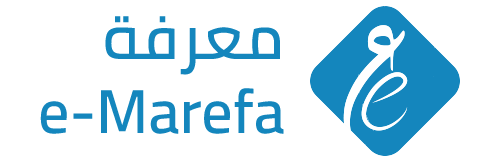استخدام نموذج التعلم التفاعلي لتدريس مختبرات الفيزياء بسبب فيروس كورونا
DOI:
https://doi.org/10.59994/pau.2024.2.58الكلمات المفتاحية:
المختبر الإلكتروني، الهاتف الذكي، الواقع المعزز، كوروناالملخص
بسبب جائحة فيروس كورونا ظهرت مشكلة مع المقررات الدراسية التي تحتاج إلى مختبرات عملية مثل الفيزياء والكيمياء والأحياء حيث لا يمكن تطبيقها عن بعد، لذلك هدفنا في هذا البحث إلى تطوير نظام تعليمي ذكي لمختبرات الفيزياء والتي تعتبر من أصعب المواد الدراسية، حيث يحدد هذا البحث كيف يمكن استخدام الواقع المعزز لتدريس مختبرات الفيزياء عن بعد ويقترح تطبيق جوال يستخدم تقنية الواقع المعزز لتدريس مختبرات الفيزياء للطلاب باستخدام تقنيات الجوال، يوفر التطبيق كافة الخيارات لإجراء تجارب مقررات مختبر الفيزياء 1 و 2، من خلال واجهة رسومية قابلة للاستخدام وتقنية الواقع المعزز يدخل الطالب إلى التطبيق الجوال ثم يختار أي تجارب يريد ممارستها وأخيراً يتم تسجيل النتائج، علاوة على ذلك يمكن للطلاب تكرار التجارب عدة مرات لتحسين معرفتهم ومهاراتهم. يشكل هذا التطبيق خطوة أساسية في تدريس المختبر التعليمي في التعليم العالي، ويمكن تحسينه ليكون متوافقًا مع المزيد من الأجهزة الذكية وقابل للتطبيق على المزيد من المختبرات من الفيزياء.
التنزيلات
المراجع
Altmeyer, K., Kapp, S., Thees, M., Malone, S., Kuhn, J., & Brünken, R. (2020). The use of augmented reality to foster conceptual knowledge acquisition in STEM laboratory courses—Theoretical background and empirical results. British Journal of Educational Technology, 51(3), 611-628.
Andujar, J. M., Mejías, A., & Márquez, M. A. (2010). Augmented reality for the improvement of remote laboratories: an augmented remote laboratory. IEEE transactions on education, 54(3), 492-500.
Azuma, R. T. (1997). A Survey of Augmented Reality. PRESENCE: Virtual and Augmented Reality, 6(4), 355-358.
Bower, M., Howe, C., McCredie, N., Robinson, A., & Grover, D. (2014). Augmented Reality in education–cases, places and potentials. Educational Media International, 51(1), 1-15.
Costa, M. C., Manso, A., & Patrício, J. (2020). Design of a mobile augmented reality platform with game-based learning purposes. Information, 11(3), 127.
Garzón, J., & Acevedo, J. (2019). Meta-analysis of the impact of Augmented Reality on students’ learning gains. Educational Research Review, 27, 244-260.
Kerawalla, L., Luckin, R., Seljeflot, S., & Woolard, A. (2006). “Making it real”: exploring the potential of augmented reality for teaching primary school science. Virtual reality, 10, 163-174.
Kesim, M., & Ozarslan, Y. (2012). Augmented reality in education: current technologies and the potential for education. Procedia-social and behavioral sciences, 47, 297-302.
Lee, K. (2012). Augmented reality in education and training. TechTrends, 56, 13-21.
Nilsook, S. T. a. P. (2015). Using Augmented Reality for Teaching Physics. s.l., The sixth International e-Learning Conference.
Ozdemır, M., Sahın, C., Arcagok, S., & Demır, M. K. (2018). The effect of augmented reality applications in the learning process: A meta-analysis study. Eurasian Journal of Educational Research, 18(74), 165-186.
Pence, H. E. (2010). Smartphones, smart objects, and augmented reality. The Reference Librarian, 52(1-2), 136-145.
Saltan, F., & Arslan, Ö. (2016). The use of augmented reality in formal education: A scoping review. Eurasia Journal of Mathematics, Science and Technology Education, 13(2), 503-520.
Scrivner, O., Madewell, J., Buckley, C., & Perez, N. (2016, December). Augmented reality digital technologies (ARDT) for foreign language teaching and learning. In 2016 future technologies conference (FTC) (pp. 395-398). IEEE.
Thees, M., Kapp, S., Strzys, M. P., Beil, F., Lukowicz, P., & Kuhn, J. (2020). Effects of augmented reality on learning and cognitive load in university physics laboratory courses. Computers in Human Behavior, 108, 106316.
Tzima, S., Styliaras, G., & Bassounas, A. (2019). Augmented reality applications in education: Teachers point of view. Education Sciences, 9(2), 99.
WHO. (2020 a). Laboratory testing for coronavirus disease. WHO.
WHO. (2020 b). COVID-19. Retrieved from www.who.int: https://2u.pw/tceerCAz
WHO. (2020 c). Mendely. COVID-19 Retrieved from: www.mendely.com.
Yuen, S. C. Y., Yaoyuneyong, G., & Johnson, E. (2011). Augmented reality: An overview and five directions for AR in education. Journal of Educational Technology Development and Exchange (JETDE), 4(1), 11.
التنزيلات
منشور
كيفية الاقتباس
إصدار
القسم
الرخصة
الحقوق الفكرية (c) 2024 مجلة جامعة فلسطين الأهلية للبحوث والدراسات

هذا العمل مرخص بموجب Creative Commons Attribution 4.0 International License.
مجلة جامعة فلسطين الاهلية للبحوث والدراسات تعتمد رخصة نَسب المُصنَّف 4.0 دولي (CC BY 4.0)











